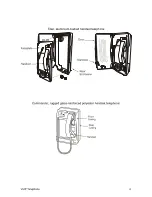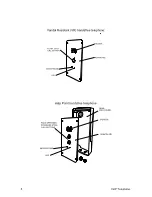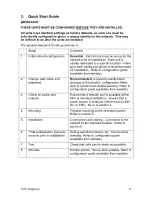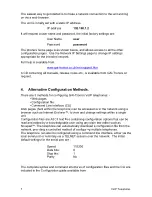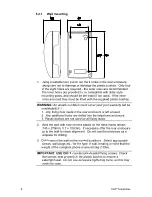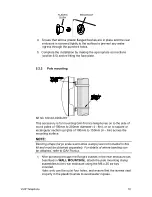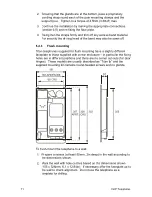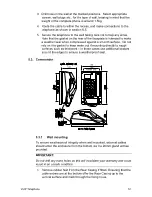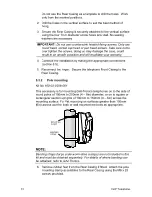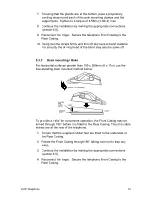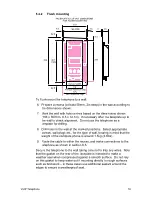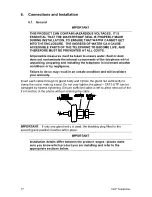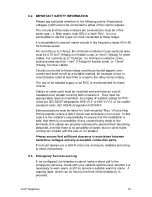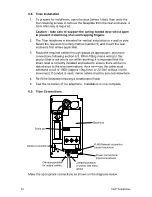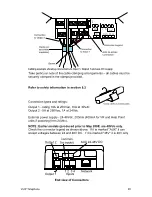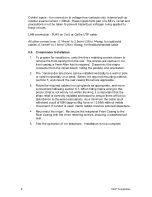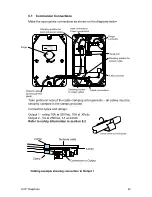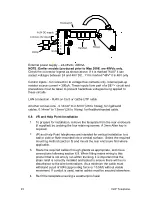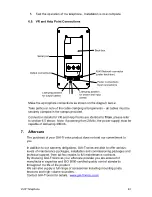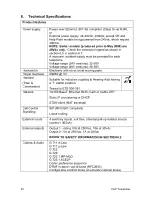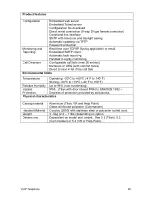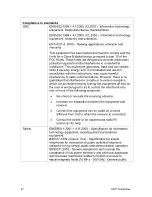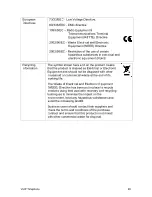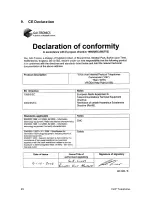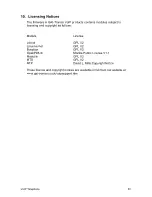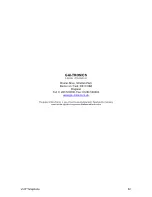
VoIP Telephone.
18
6.2. IMPORTANT SAFETY INFORMATION
Please pay particular attention to the following points if hazardous
voltages (>48V) are to be connected to either of the control outputs:
The circuits that the relay contacts are connected to must be of the
same type, i.e. Both mains, both SELV or both TNV. It is not
permissible to mix the types of circuit connected to these relays.
It is acceptable to connect mains circuits in the frequency range 45 to 65
Hz to these relays.
For currents up to 5 Amps, the minimum conductor cross sectional area
must be 0.75 mm
2
(19awg) for flexible cords, or 1mm
2
(18awg) for other
cables. For currents up to 10 Amps, the minimum conductor cross
sectional area must be 1 mm
2
(18awg) for flexible cords, or 1.5mm
2
(16awg) for other cables.
Circuits connected to these relays must be protected against over-
current and short circuit by a suitable method, for example a fuse or
circuit breaker rated at less than or equal to the relay contact rating.
The use of an isolated supply or an RCD is recommended for these
circuits.
Cables or cords used must be insulated and and have an overall
insulated outer sheath covering both conductors. They must be
appropriately rated and certified. Examples of suitable ratings for PVC
cords are IEC 60227 designation H05 VV-F or H05 VV-F2, or for rubber
insulated cords, IEC 60245 designation H05 RR-F
Extra precautions must be taken for flush-mounted Titan, VR and Help
Point products (where a GAI-Tronics rear enclosure is not used). In this
case it is the installer's responsibility to ensure that the installation is
safe, that there is no possibility of any contact being made to live
terminals, that cables are properly restrained to prevent them becoming
detached, and that there is no possibility of water, dust or other fluids
coming into contact with the rear of the product.
Always ensure that sufficient clearance is maintained between
hazardous voltages and any accessible conductive parts.
If in doubt always use a GAI-Tronics rear enclosure, installed according
to these instructions.
6.3. Emergency
Services
warning
If, as configured, the telephone cannot make a direct call to the
emergency services, check with your network administrator whether it is
necessary to warn users, and if so provide a suitable warning notice. A
warning label, which can be fixed to the front of the telephone, is
provided.
Содержание Titan
Страница 29: ...29 VoIP Telephone 9 CE Declaration...
Страница 31: ...31 VoIP Telephone...

